Meet the architect behind China's smog-sucking 'vertical forests'
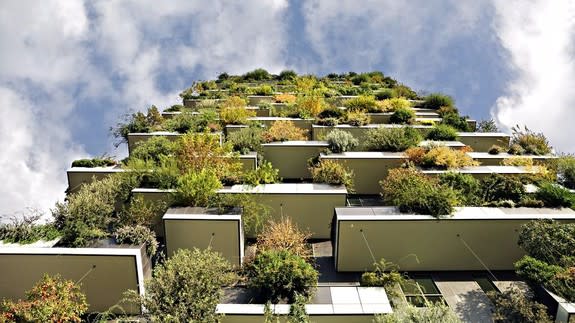
Italian architect Stefano Boeri has a plan to steer the world away from glistening glass skyscrapers: Cover them with trees.
Boeri's Vertical Forests reimagine buildings as enormous air purifiers for smoggy cities. The trees, plants and shrubs also offer shade on sunny days and act as cozy blankets during winter, allowing tenants to reduce their electricity use. Also, they're really pretty.
SEE ALSO: China's big, beautiful, green 'vertical forests' will suck up toxic smog
His architecture firm, Stefano Boeri Architetti, unveiled plans this week for two Vertical Forests in Nanjing, China. The buildings will follow the prototype of two existing tree-covered towers in Boeri's home of Milan, Italy.
Mashable spoke by phone with the architect to discuss his inspiration for the Vertical Forests, along with his latest efforts to transform entire Chinese skylines into three-dimensional forests. We've edited the interview for clarity and length.
What was your inspiration for Vertical Forests?
I was asked to design the towers in Milan in 2006. At the time, hundreds of new skyscrapers were simultaneously growing in cities like Dubai or Abu Dhabi, and all were covered by glass panels.
Knowing about climate change, and many other things, I was not exactly in favor of this choice. Glass reflects sunlight onto the ground, heating up cities. And it's an amazing material, but glass not the best when you have to deal with air conditioning and internal energy consumption.
It's something I'd been thinking about for a long time. I've always been fascinated by trees and architecture. In Lucca, Italy, there's a 14th-century tower that has trees on the top. So I started to imagine how trees could become the main protagonist on a building's façade.
That was very important, to change completely the landscape.
What challenges did you face building Vertical Forests in Milan?
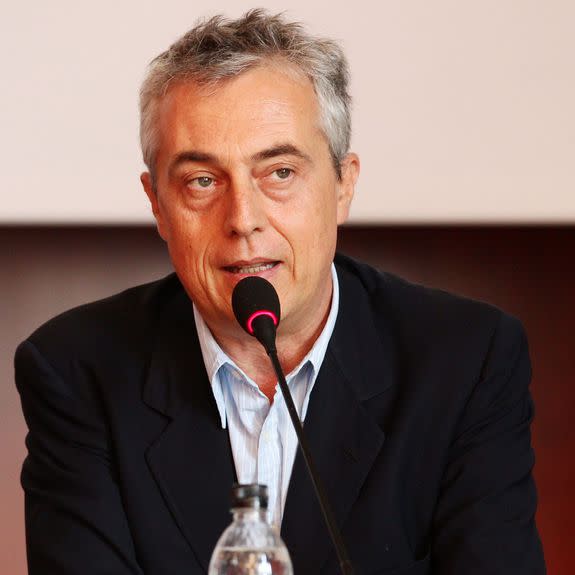
Image: Vittorio Zunino Celotto/Getty Images
One of the main issues was with the wind. As you can imagine, having trees at 120 meters (394 feet) high means you have to be sure that the branches can't be broken by extremely windy conditions, or fall down.
I was working with the Arup engineering firm, a bunch of botanists and other experts, and we came up with a design solution. We checked with a real tree on a real balcony in extreme winds to see if it was working. We knew we were the first to deal with such problems.
The construction of the soil itself was also a very important step. It couldn't be too heavy, because it's on the balcony. But it also can't be too light, otherwise the roots could move. The botanists worked very well to figure out a balance.
In 2012, we started to move more than 1,000 trees one-by-one from a nursery in northern Milan to the construction site. We opened the building in October 2014.
Tell me more about the plants and their benefits.
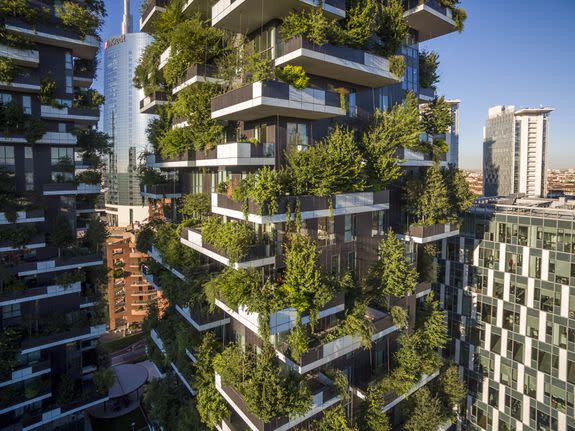
Image: Courtesy of Stefano Boeri Architetti
For the northern façade of the towers, we selected trees that lose their leaves in the winter. That way the weaker sunlight can better enter the apartments. On the south side, we selected more Mediterranean species of trees, plants and shrubs.
The leaves help create a kind of microclimate that reduces summertime temperatures on the building's surface. That helps so much in reducing the consumption of energy.
There's around 21,000 plants on the two towers. It's the equivalent of 2 hectares (5 acres) of a real forest, but over the surface of 1,300 square meters.
There's also the issue of biodiversity. We not only have 100 different species of plants, we also have 22 species of birds that are nesting on the two towers. It's quite important to see birds coming back in Milan. It's an ecosystem inside a super dense and polluted European metropolitan environment.
How do you maintain all those plants? What happens if they die?
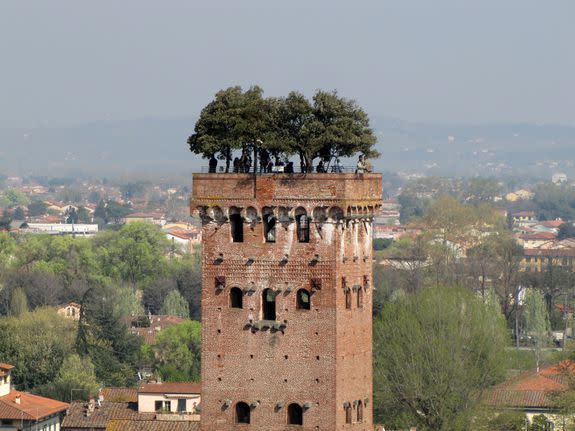
Image: LivornoDP/wikimedia commons
We've been surprised — we thought there would be plant mortality of around 10 percent, but as of now, the trees are living perfectly.
All of the greenery is owned by the entire community of tenants, and all the maintenance is centralized. Day by day, hour by hour, we have a system that checks at any moment the growth of the trees, the irrigation, the condition of the soil. We also have gardeners and climbers that come out twice a year to cut and maintain the trees.
We know that it is an experiment, but people there are very happy at the moment. The plants are working so well in absorbing carbon dioxide, producing oxygen and absorbing all the dust produced by the urban traffic.
What else is in the works?
China's Nanjing towers could provide the city, a breath of fresh air, giving an estimated 132 pounds of oxygen daily>https://t.co/MFuaOgsuIg pic.twitter.com/Y97Tm68vcl
— UN Environment (@UNEP) February 5, 2017
In Nanjing, we'll have two towers — one is an office tower, and the other is a Hyatt hotel.
We're working with botanists to select plants for the local climate conditions and biodiversity. And we're working again with Arup on construction, which started some months ago. In June, we’ll have the structure done, and we’ll start moving in the plants in October or November. It will be ready in 2018.
We are also close to starting in Guizhou, in southwest China, where we've designed a hotel in the shape of a mountain.
Outside China, we're involved in new projects in Albania and Chicago. In Lausanne, Switzerland, we'll start in a few months to build a residential tower made from wood.
All these projects together are important for us. In any project, we try to improve not only on the quality but also the technological implications that a building like this requires.
What are "Forest Cities"?
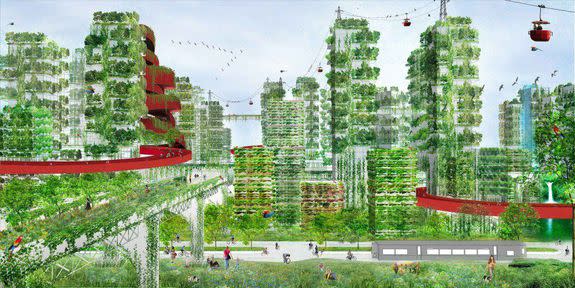
Image: courtesy of stefano boeri architetti
It's not just a single building, but entire small cities that have buildings of different heights covered with trees.
In China, we are designing the buildings in Liuzhou, a city along a river, where we won a design competition three years ago. We should be done in 2021. We're doing the same thing in part of Shijiazhuang, a major industrial area city near Beijing.
It's like an answer to this crazy expansion of the urban environment in China. Millions of people are abandoning the countryside and moving into cities. It's very important to completely change how these new cities are developing.
Urban forestation is one of the biggest issues for me in that context. That means parks, it means gardens, but it also means having buildings with trees.
